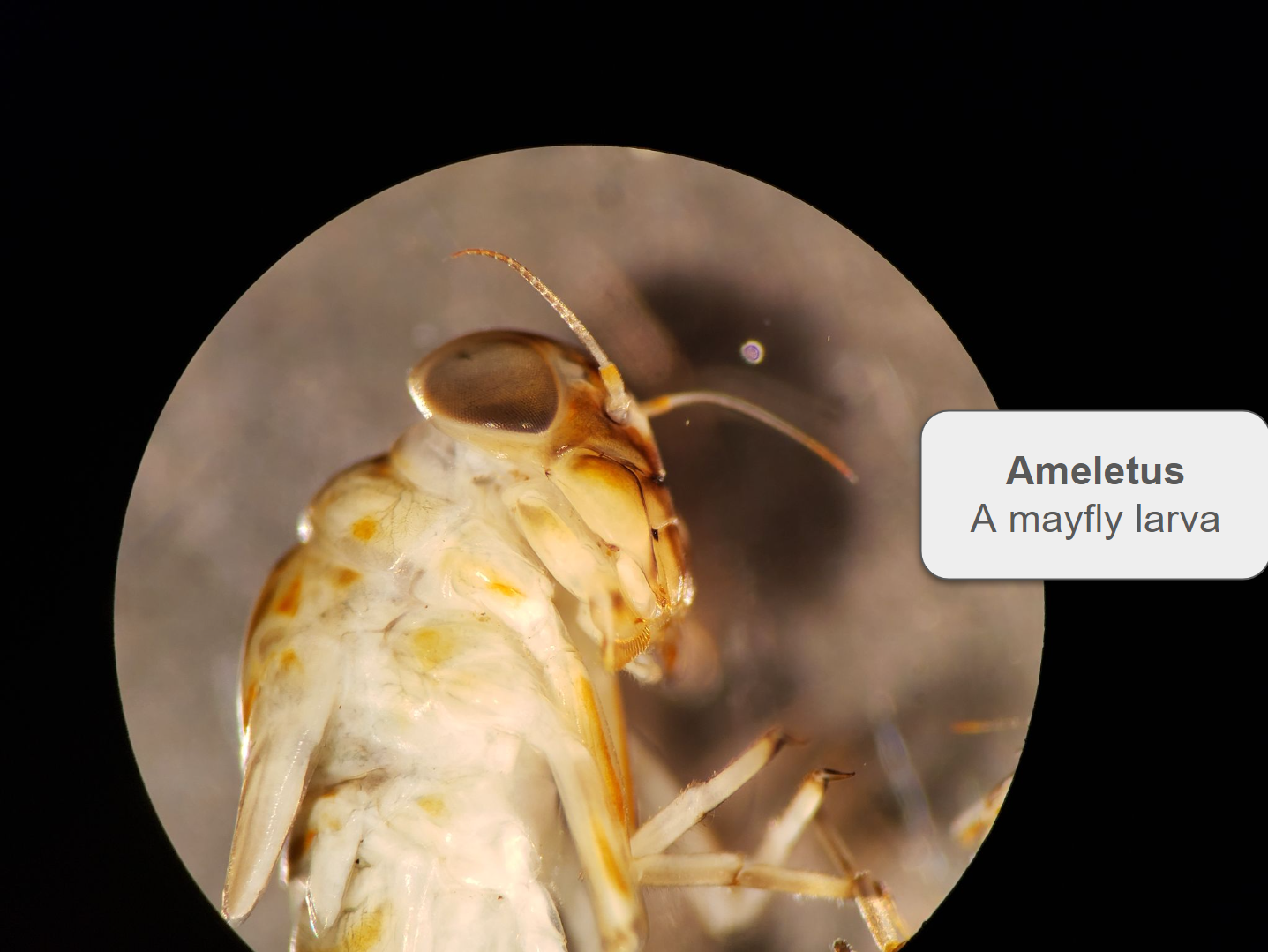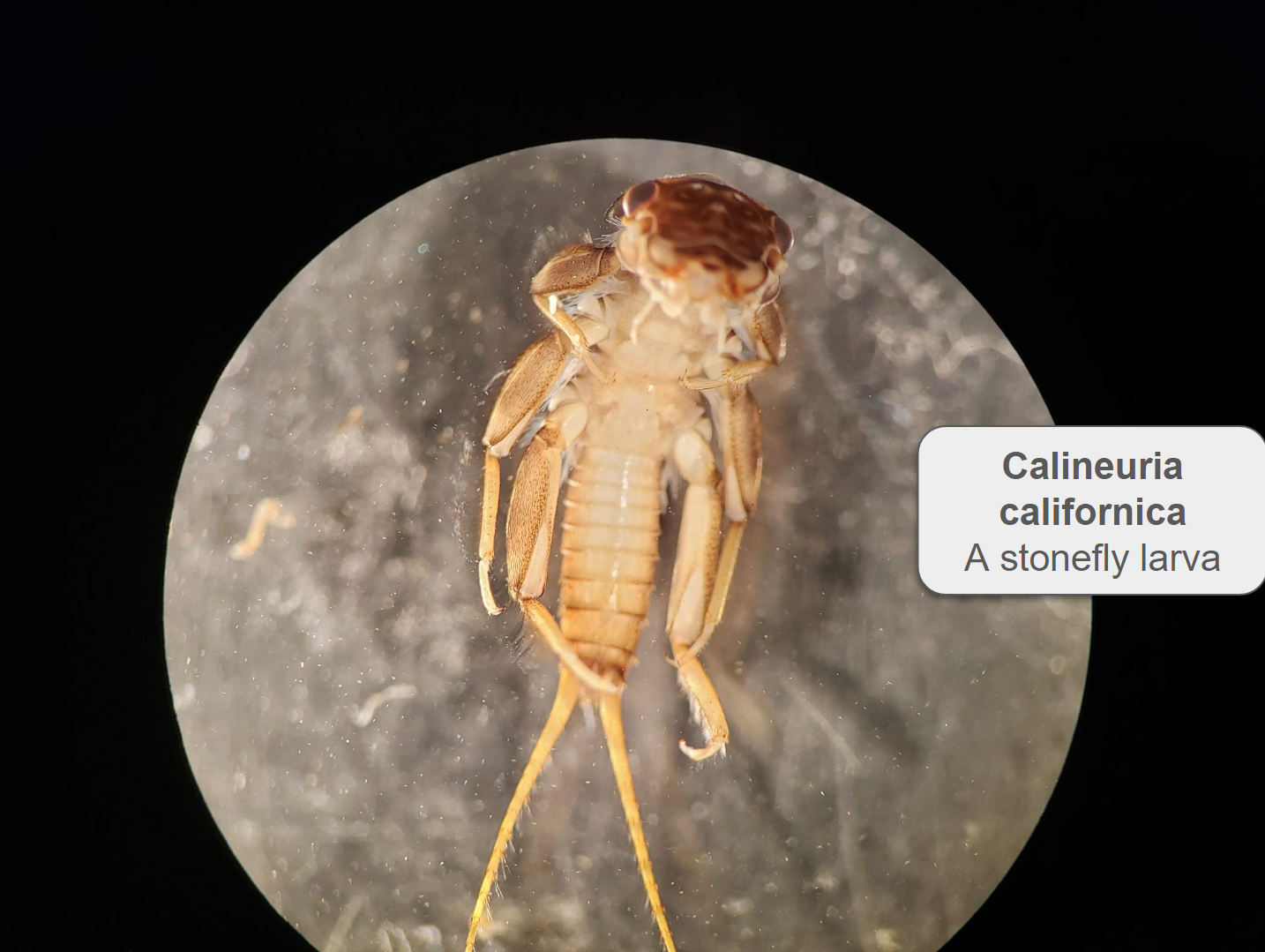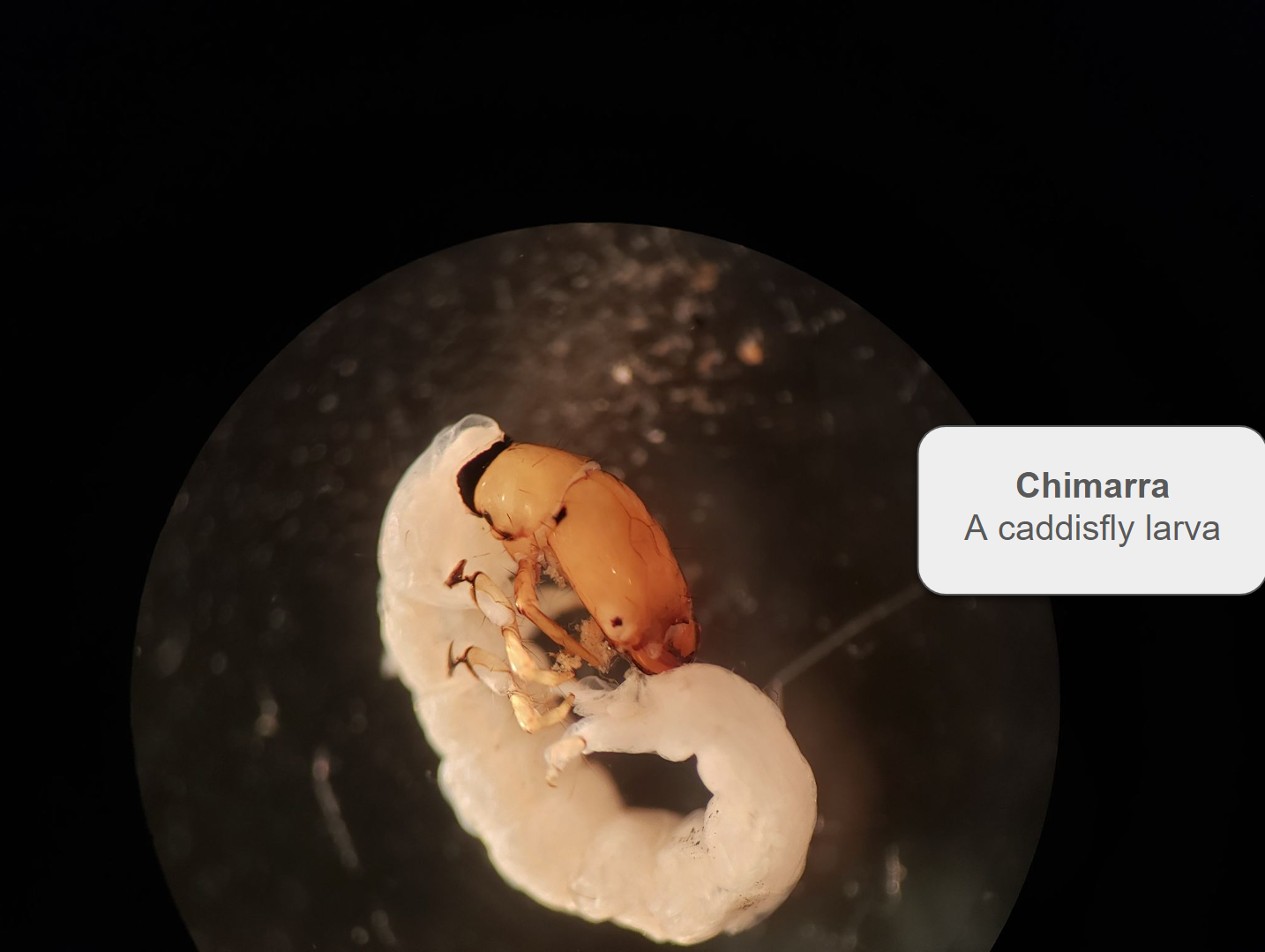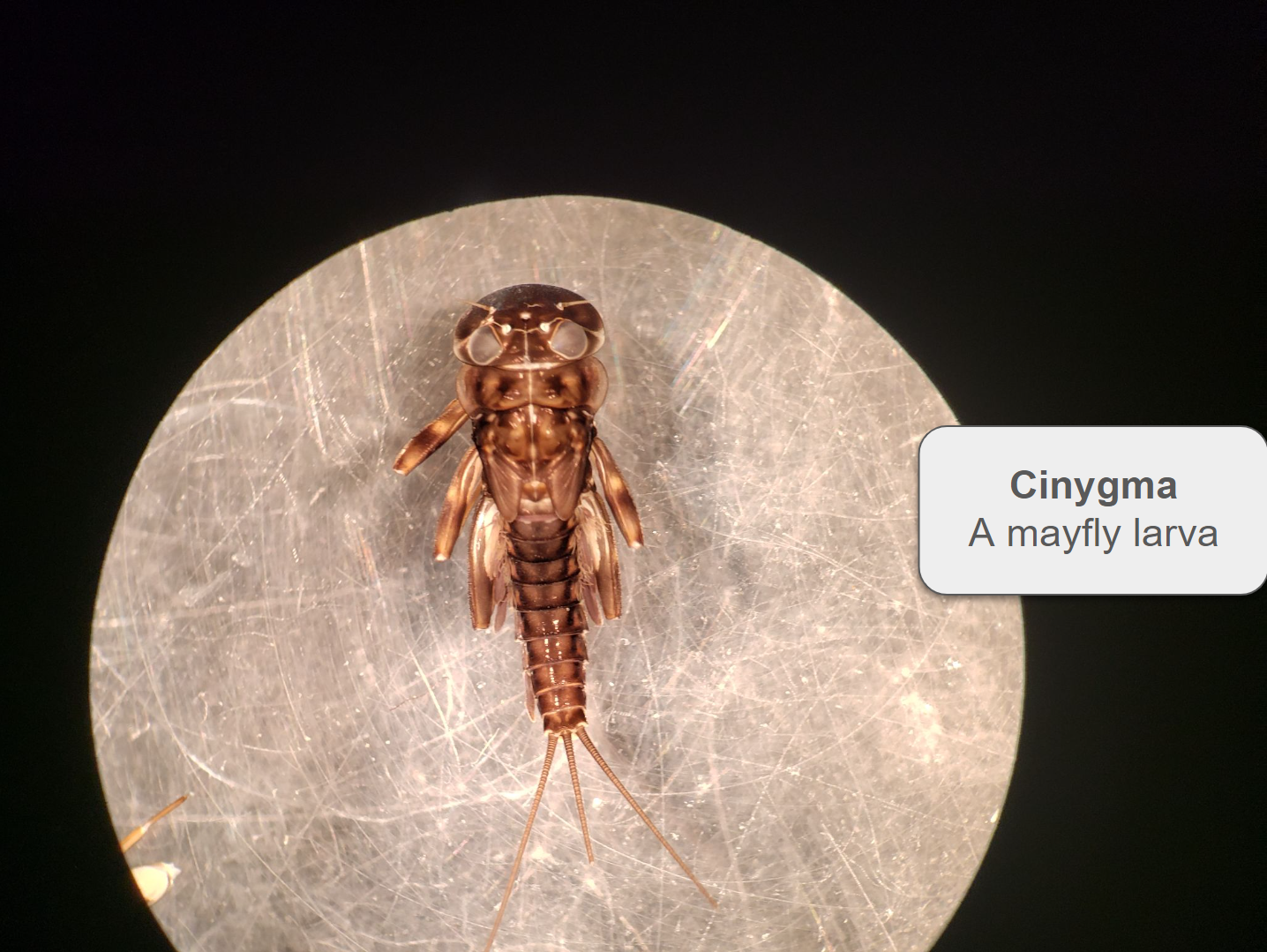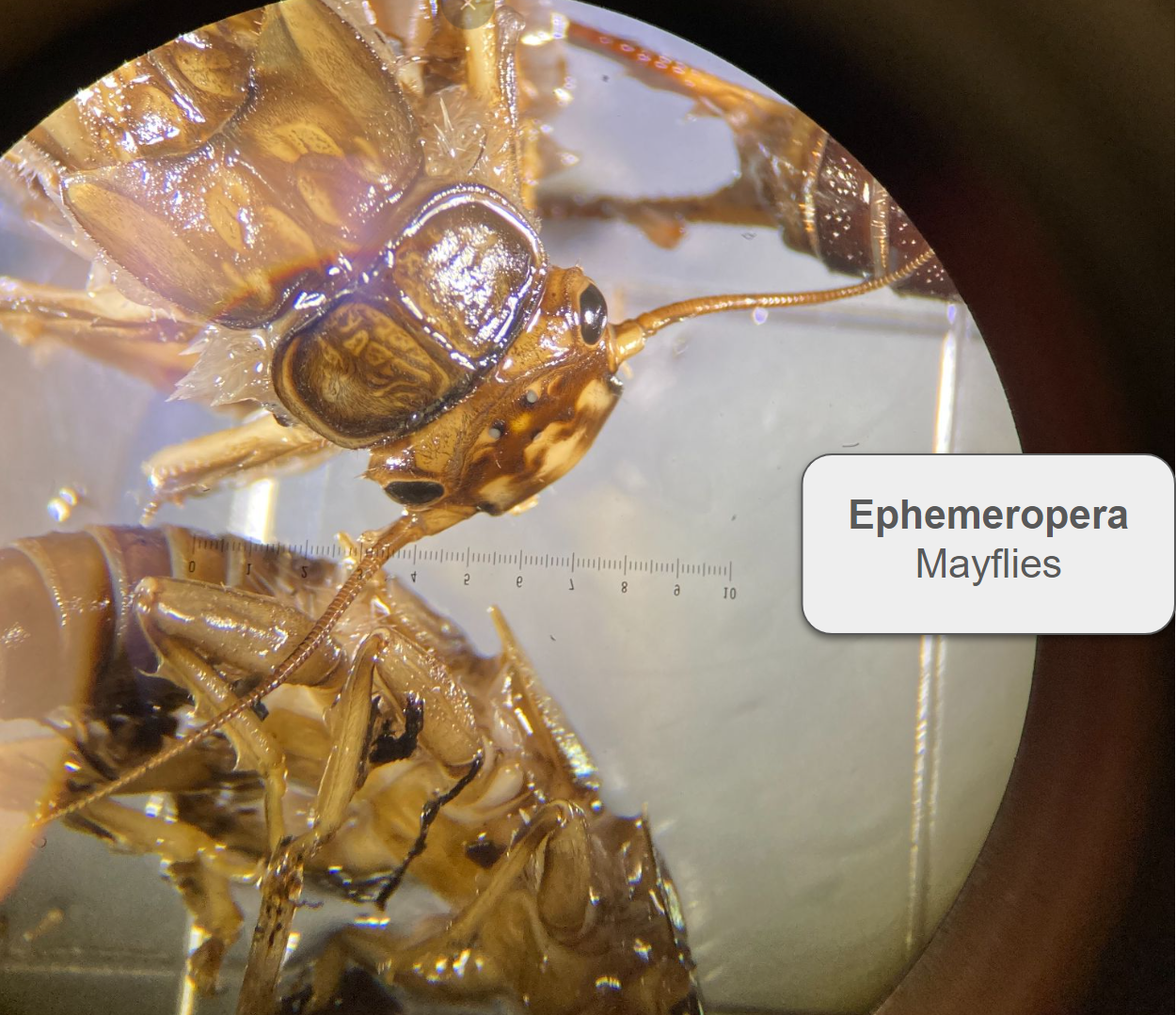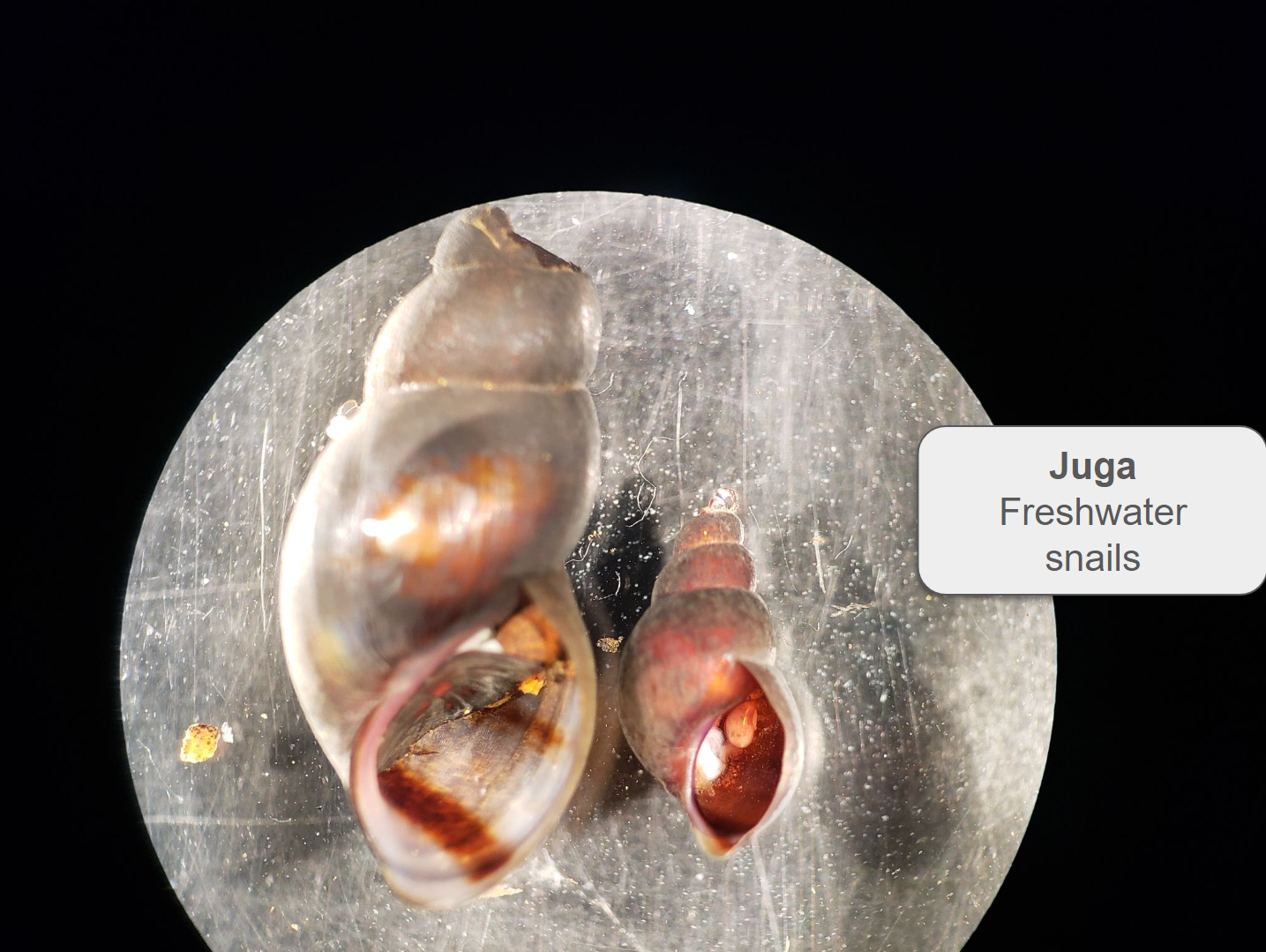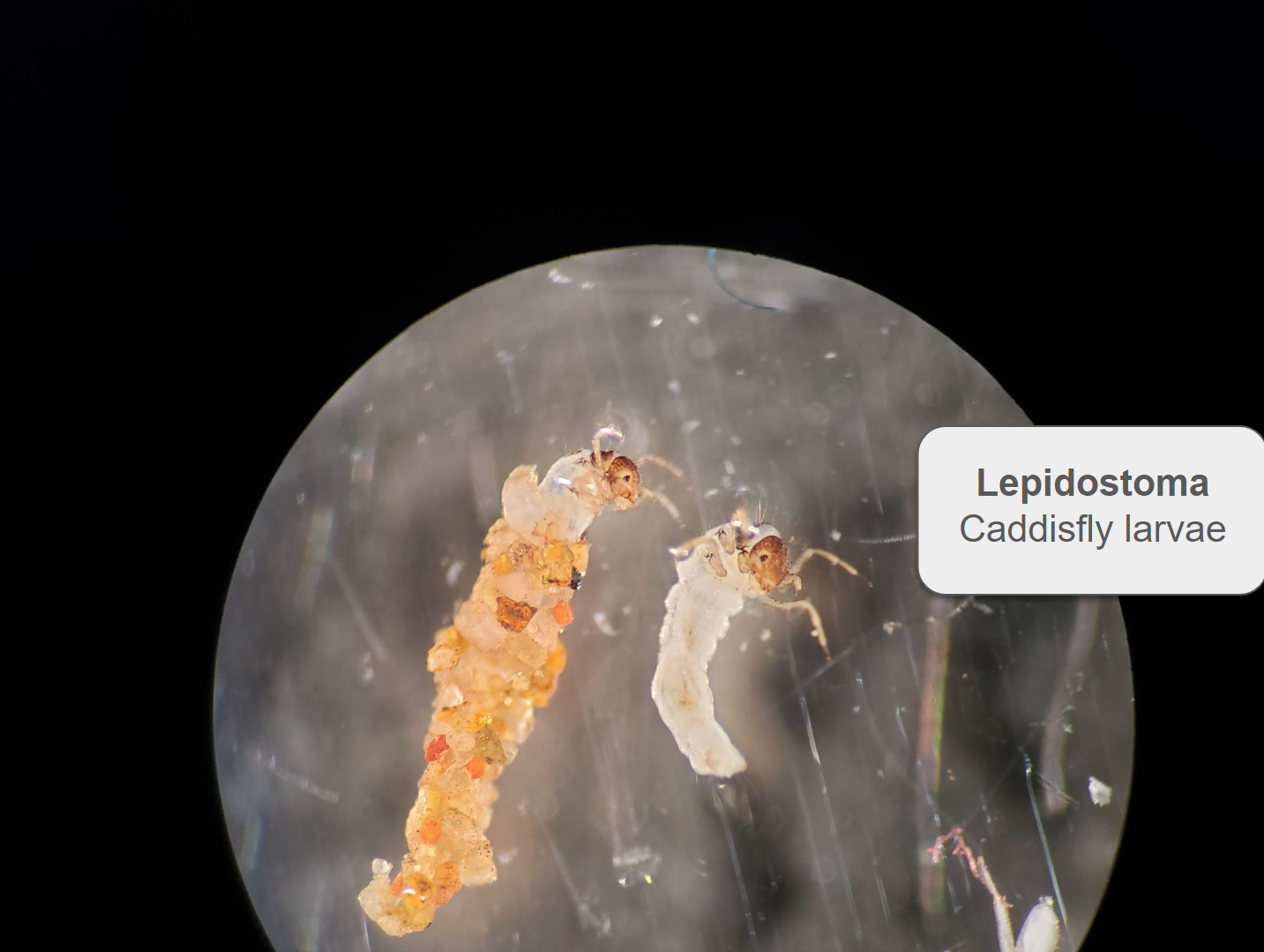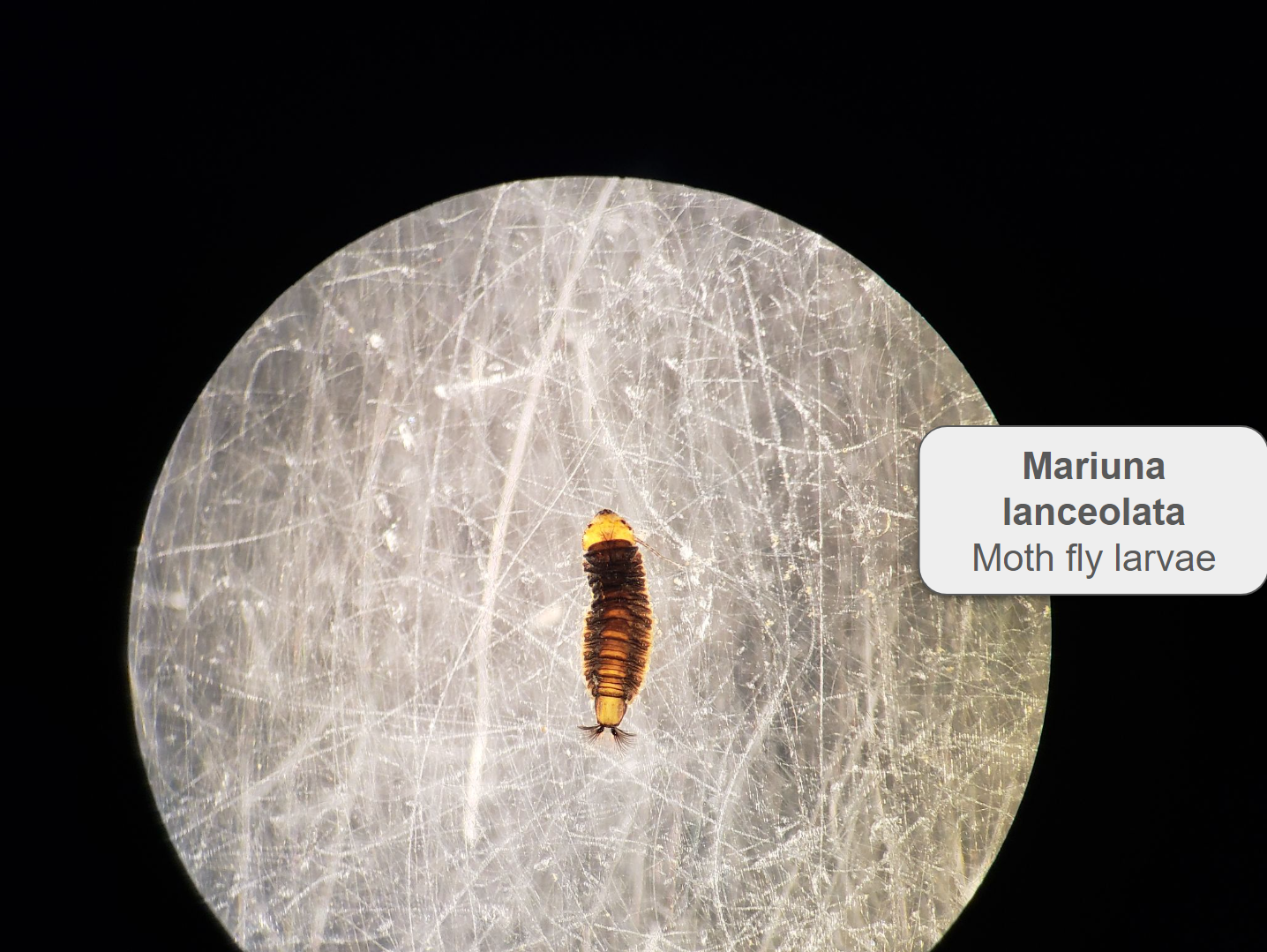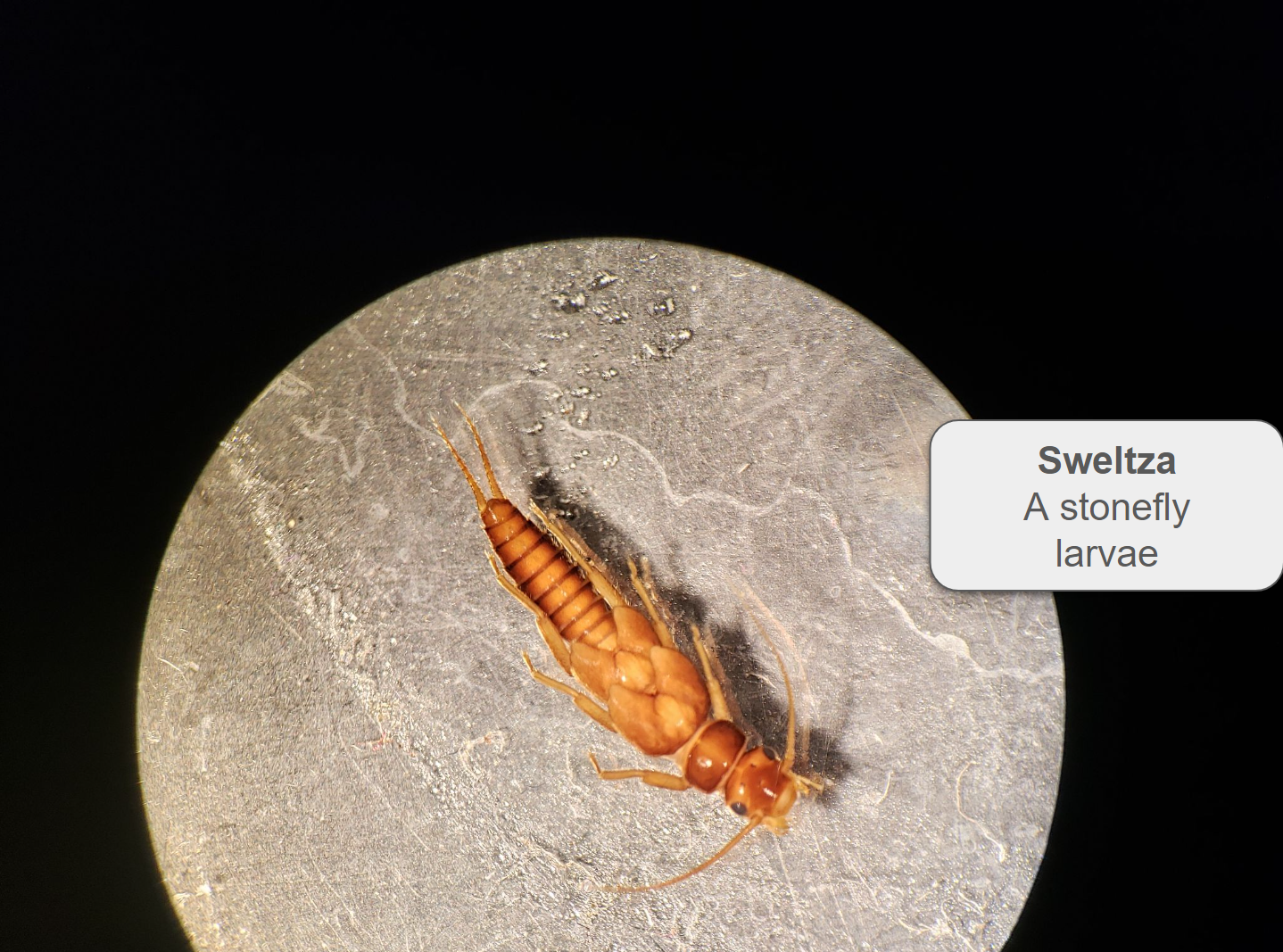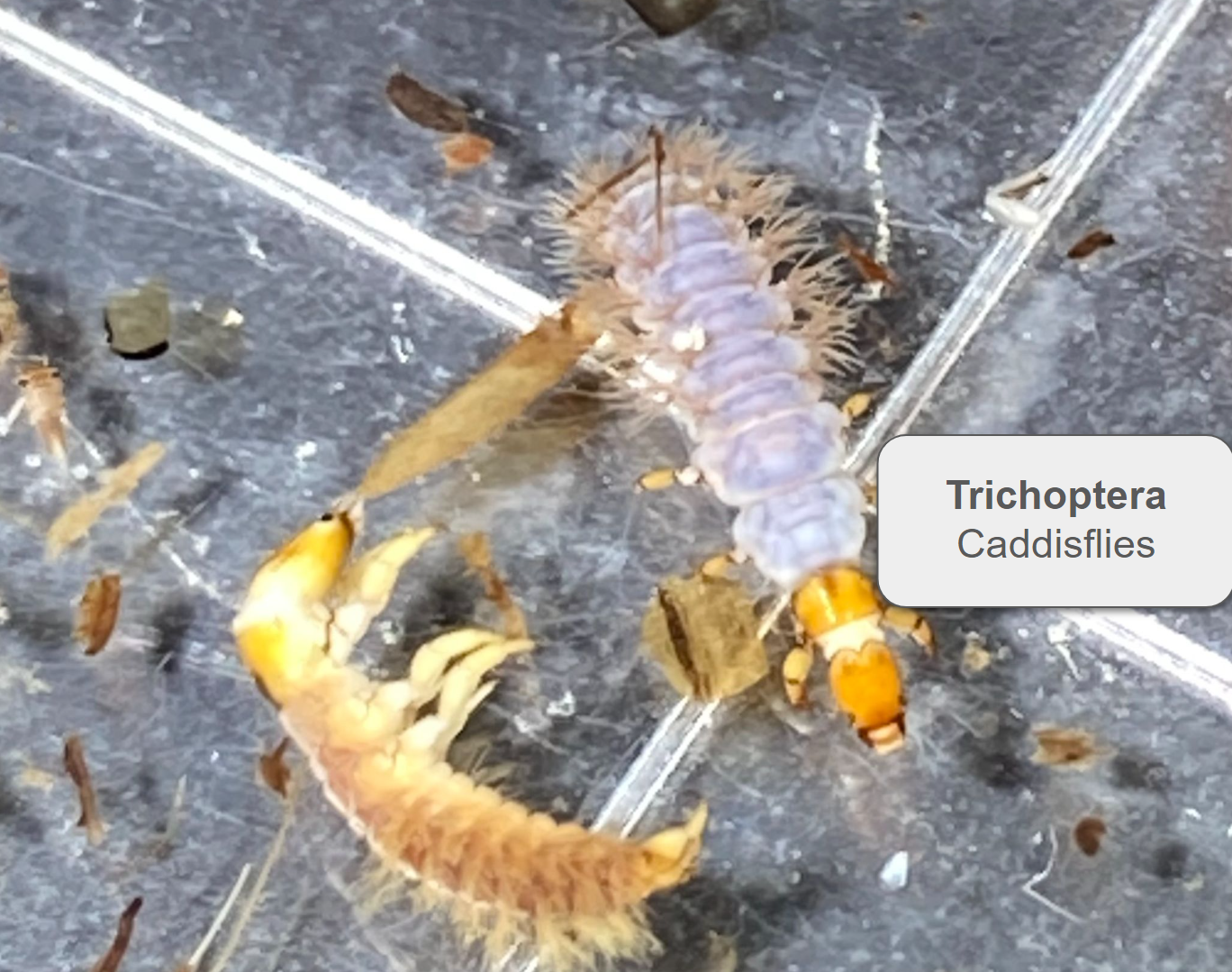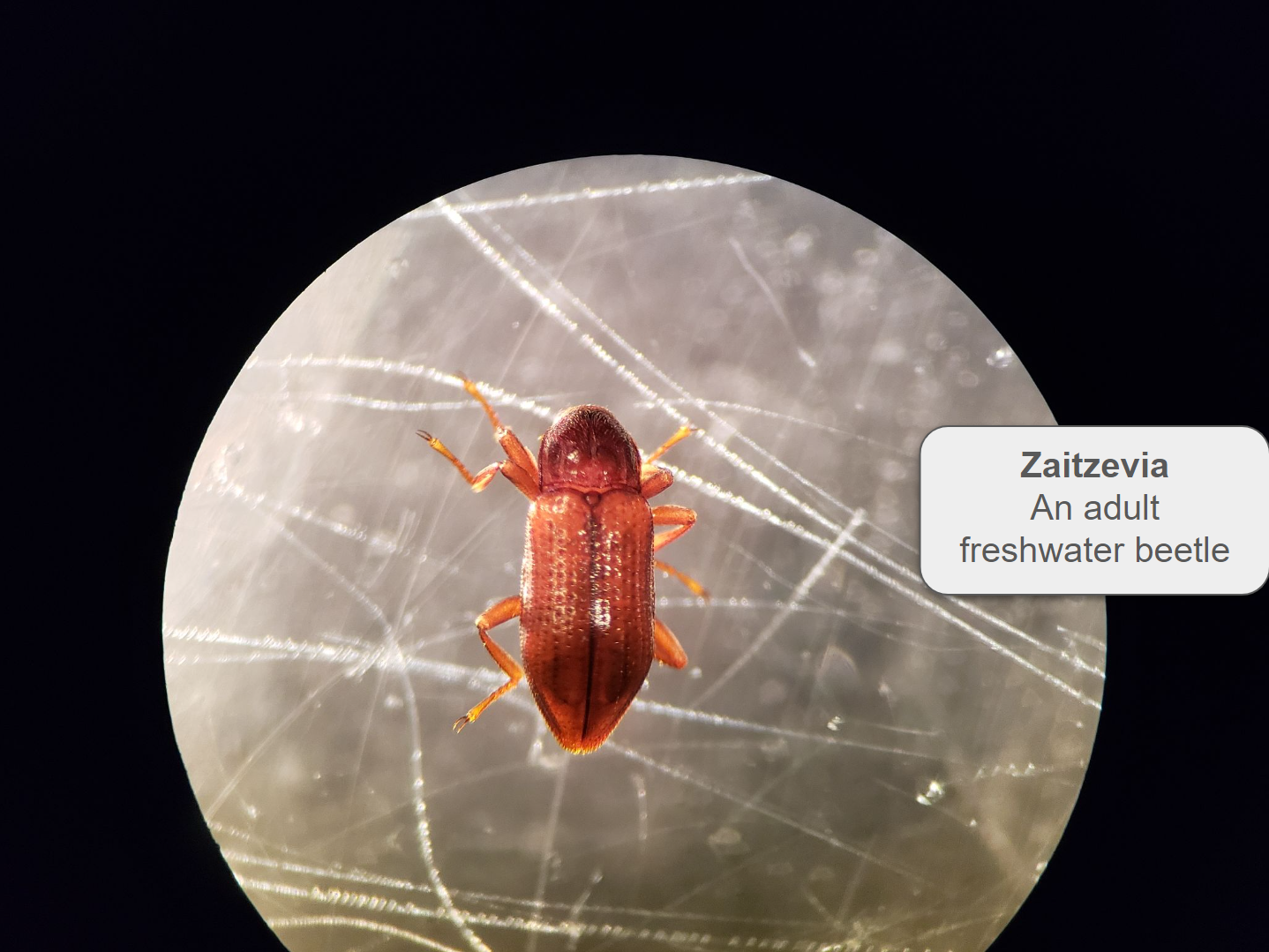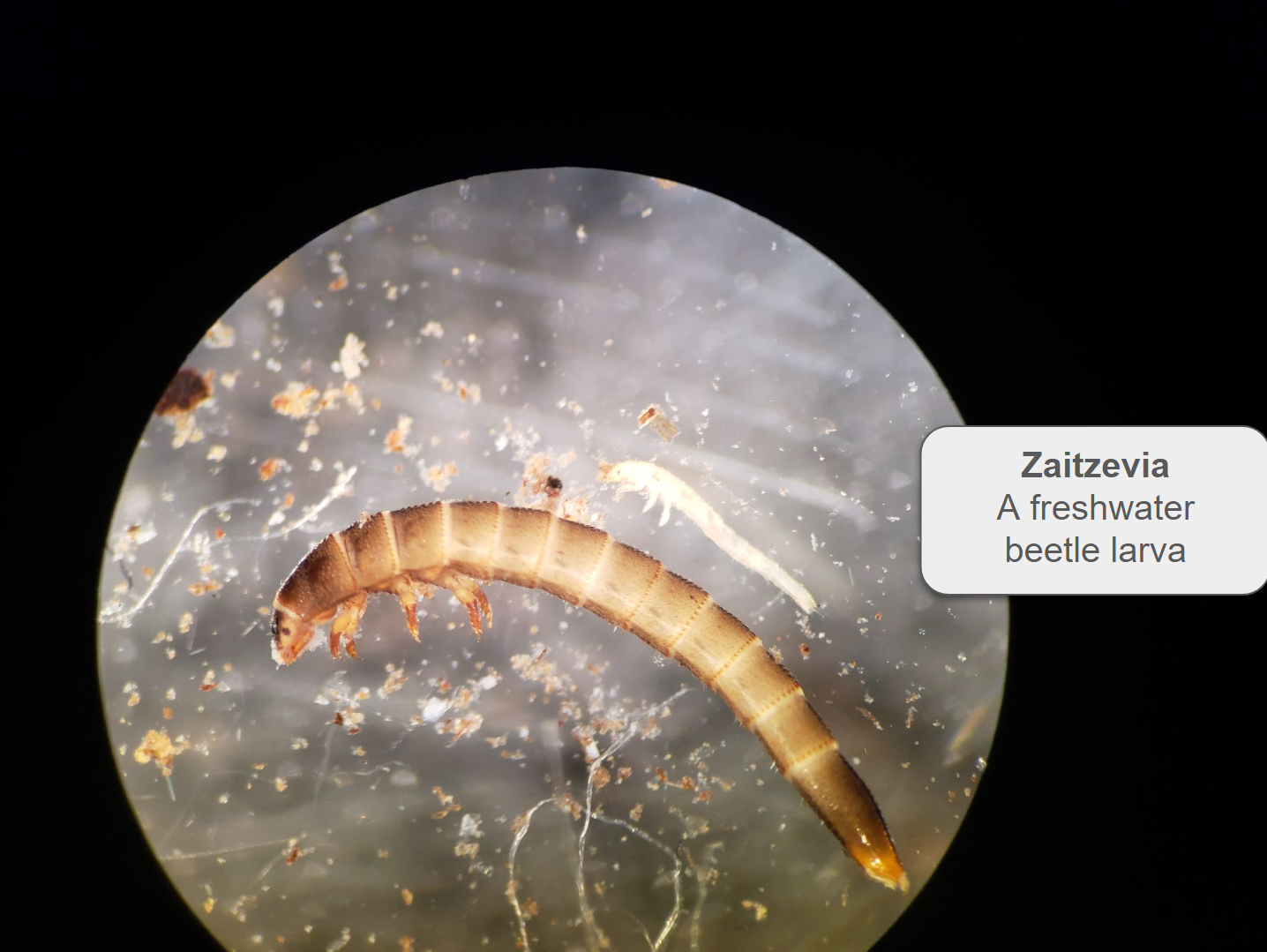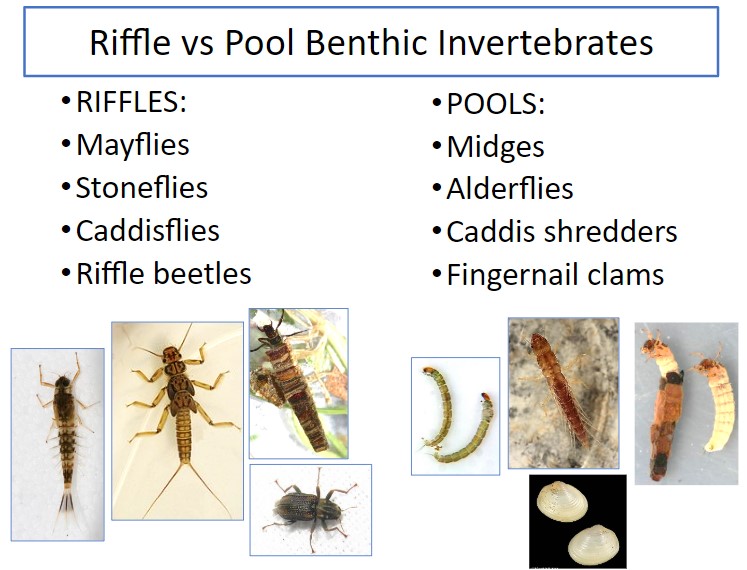In the Benthic Macroinvertebrate Laboratory (BMI Lab), we work on sorting, identifying, and analyzing data collected on benthic macroinvertebrates (BMI) from creeks, streams and rivers throughout the northern Sierra Nevada range. BMI are indicators that allow us to understand the health of the water ecosystem, like a canary in a coal mine. For example, certain BMI will be absent in a creek that has high nutrient input, whilst others will thrive in this environment. Stoneflies have a very low tolerance for pollutants, so if the creek supports a thriving stonefly population, water quality must have been good for some time. By studying which BMI are present and absent, we can build up a long term picture of the health of our waterways. We have volunteers and interns that help our staff and we do fee for service work too. Want more information? Email us at bugs@sierrastreamsinstitute.org!
What is a benthic macroinvertebrate?
A BMI is an animal without a backbone – invertebrate – that we can see with our naked eye – macro – who completes at least some of their life cycle on or in the substrate of an aquatic habitat – benthic.
What are we currently up to?
Since 2001, Sierra Streams Institute has monitored the length of Deer Creek and Bear River. We survey every June and October, taking samples from numerous sites across these two waterways and identify BMI collected to the highest possible taxon. This provides a fantastic data set, both spatially and temporally, so we can understand long term impacts on the waterways.
The State of California has a huge project where they want a DNA barcode of every organism in the state. A DNA barcode is a piece of DNA that is unique for each species. We are working with the State of California to provide a DNA barcode sequence for BMI in the northern Sierra Nevada watersheds. Freshwater invertebrates are often overlooked when gathering species information in ecosystems and so we are providing invaluable data for understanding California’s rich biodiversity.
The BMI Lab also helps to study the impacts of restoration projects. We have in-house restoration efforts that require BMI monitoring, like our riverbank restoration project at the BEALE Airforce Base, and external projects, such as the restoration of an acid mine. By establishing a baseline and then monitoring the changes in the BMI community as these projects develop, we can see what impact these restoration efforts are having for the aquatic ecosystem.
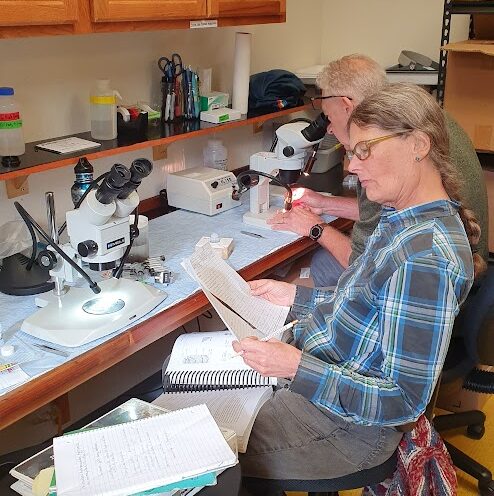
Our long-standing volunteers deliberate over the taxonomic identification of a BMI
Timeline of a benthic macroinvertebrate sample
Once the BMI have been collected, the sample is stored in alcohol until it can be sorted and identified. Then we pick out the bugs from the plant and algae matter and sort them into vials depending on their taxonomic order. The BMI are then identified to their highest taxonomic classification using the SSI Bug Book. (Taxonomic classification notes similarities and evolutionary relationships between organisms and categorizes them accordingly.) The data is stored and analyzed in house and is available on request.

Our high school intern searches for BMI amongst the algae and organic matter.
Research
Riffle vs Pool Habitat
We are studying the differences in benthic macroinvertebrate (BMI) communities between two key habitats in streams: riffles and pools. Riffles are areas of faster shallower moving water and pools are areas of slower deeper areas of water. Sediment tends to move through riffle habitats and collect in pool habitats. With drought, riffle habitats are being reduced as in low flow, there is not enough water to maintain riffles. We want to understand how BMI communities are changing along the streams with these changes in weather patterns.
Trends in BMI in Deer Creek
For over 2 decades we have been monitoring Deer Creek. We have data on water quality and benthic macroinvertebrate (BMI) across the length of the creek. We have been analyzing our data to try and find trends in the data both temporally and spatially.
One trend is that the diversity of species is higher in the upper watershed when compared with the lower watershed.
Another trend is that the species in the lower watershed are more generalist species, meaning that they can tolerate a broader range of environmental conditions, whereas the species in the upper watershed tend to be more specialized.
Humane BMI Collection
In the BMI lab, we process a lot of benthic macroinvertebrate (BMI) samples. These come from different projects, from our annual creek surveys to restoration projects. All project that we currently work with are collecting the BMI to euthanize them for further identification work in house. Here in the BMI lab, we are challenging collection methods and if we can minimize BMI death and pain.
Traditionally, we have collected our benthic macroinvertebrates from the streams by submerging them in a 70% alcohol solution. Whilst this does effectively kill and preserve them for further ID work, recent scientific literature has challenged this method. Invertebrates are widely accepted to feel pain and some researchers are pushing for the use of anesthesia when handling invertebrates.
We at SSI are committed to ever improving our collection methods and we are conducting studies into the use of different anesthetics prior to euthanasia of the collected BMI. We are aiming to have a methodology for effective anesthesia in time for our June 2025 creek surveys, and are making headway on this in April and May 2025.
The staff in the bug lab are also working with our restoration team to change survey protocols to a live field pick rather than a collection in alcohol. Since the restoration team are using a lower taxonomic resolution for their study, this can be achieved through a live field pick and count, which eliminates the need to euthanize BMI to bring back to the lab.
We are excited to begin to make headway into more ethical and conscience BMI surveying.
Metabarcoding
We are providing the State of California with important DNA barcodes from benthic macroinvertebrate (BMI) collected in the Sierra Nevada waterways. We are also comparing how the DNA found in the environment (eDNA) compares to the species we find from our bi-annual collections. We are asking the question: does eDNA give us an accurate idea of what BMI are living in a stream?
It is early days, but so far we have found that, whilst eDNA compliments our collections and helps with ID, it does not capture the full diversity of what we find in our streams. We need to continue to study this more to understand just how useful eDNA could be for future stream survey work.
Fee for service
We will work with external organizations and restoration projects to identify the BMI in their target streams and rivers. We will also train individuals and organizations on BMI identification. For more information on services and fees, please reach out to us at bugs@sierrastreamsinstitute.org. We also sell our SSI Bug Book.
Want to get involved?
Every first Wednesday of the month we are open to new volunteers. Interns also help out in the BMI Lab during the fall, spring and summer semester. Volunteers and interns can also help on June and October creek surveys. You can find our calendar schedule on the SSI Calendar. Reach out to bugs@sierrastreamsinstitute.org to inquire about volunteer and internship opportunities.
Watch a video here from about this interns job and experience in the BMI lab, and learn about the scientific discovery they made whilst working in our bug lab!
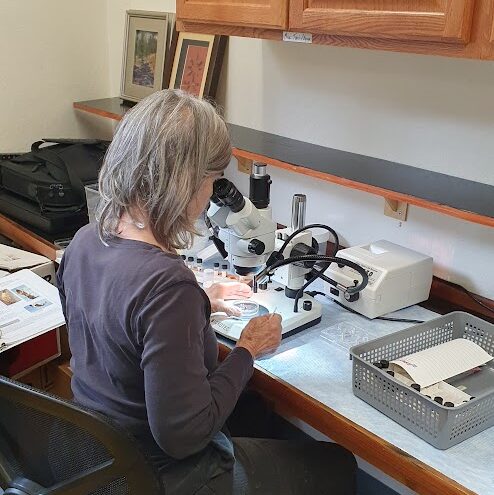
Our long-standing volunteer is identifying BMI down to their highest taxonomic classification


